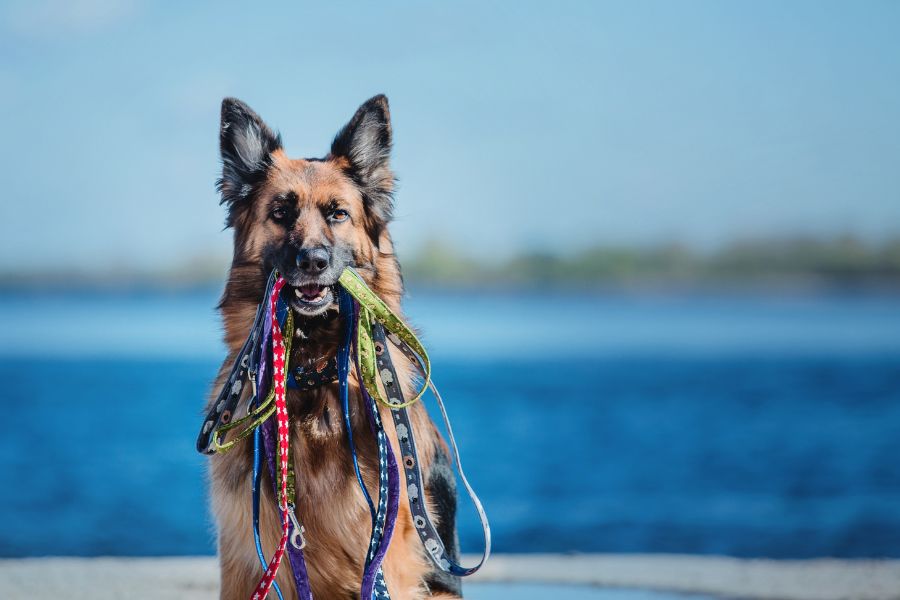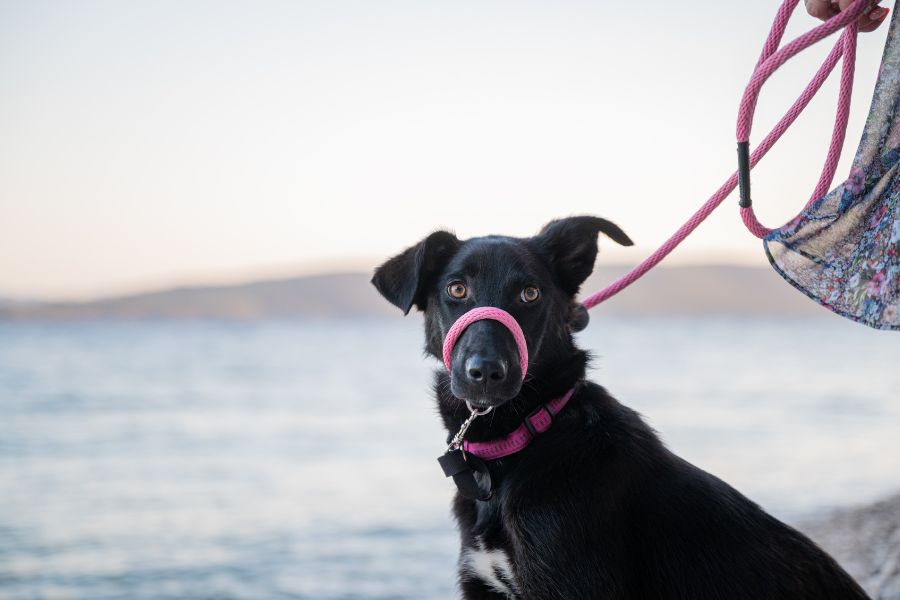Loose leash walking can be one of the most challenging things to teach a dog. It just isn’t fun walking a dog that pulls. While there are products that can provide a quick fix for some dogs, ultimately, training and time will build the best connection with your dog. In the meantime, let’s explore a tool that can help with walking. Here is a tool for happier walks: the head harness.
Head Harnesses
There are many options when it comes to head harnesses. There are several brands of head harnesses, although a preference for VIP Pets is the Halti; the Gentle Leader is an excellent choice as well.
Head harnesses function similarly to head halters used on horses. The phrase “Where the nose goes, the body will follow,” as the saying goes, is the main idea.
Acclimating Your Dog to a Head Harness
Dogs dislike the head harness and are typically not thrilled to wear one. The most important thing you can do to avoid wasting your money and becoming frustrated is to acclimate your dog to the harness in a slow but consistent manner with positive reinforcement. It takes a little time, but if you don’t do it, you’ll have a dog that is constantly working to get the harness off their face. The average dog can be convinced that wearing a head harness is a good thing in just a few short training sessions. Some dogs will take longer, so it’s essential to be patient. For successful training sessions, you’ll need lots of tasty treats, a distraction-free environment, and tons of patience and consistency.
There are several excellent resources to help acclimate your dog to a head harness. Check out the Gentle Leader Training Video and ASPCA: Head Halter Introduction Article.
Fitting the Harness
A well-fitting harness is essential to ensure a comfortable walk for you and your dog. Fitting the collar can be tricky, so don’t hesitate to ask for help. Check with a local pet care professional, like a trainer, dog walker, or pet store owner and see if they can assist you. It’s essential to check the fit every time you put the harness on your dog. As your dog grows, it will need to be adjusted. In addition, as the harness becomes broken in, it may become looser and will need to be adjusted.
Halti vs. Gentle Leader Head Harnesses
The Halti is typically recommended over the Gently Leader head harness because the Halti has a built-in safety mechanism just in case your dog slips out of the harness.
With the Gentle Leader harness, if your dog slips the harness off, you are left standing with a leash and a harness in your hand, while your dog runs free. The Halti has an additional clip that connects the harness to your dog’s collar. Because of this, if your dog slips out of the harness, you are still connected to your dog. It is an extra step in getting ready for a walk, but one that is well worth it.
Building Connection on Walks
When using a head harness, you’ll need to use a regular leash, not a flexi (retractable) leash. Much of the control you gain over your dog with the head harness is because they are more connected to you. The slightest movement of your hand can communicate information down the leash, just like the harnesses on a horse. A tight leash gives the dog information that your speed or direction has changed, signaling that your dog should turn their head towards you for a check-in. With training, your dog will learn to check in with you constantly and make adjustments. If you use a flexi or retractable leash with a head harness, you will be training your dog to work against the instructions they are receiving because there is constant pressure from the leash. Eventually, your dog will learn to ignore it, making the tool less effective.
Other Helpful Walking Tools
While head harnesses are excellent for managing pulling, you might also want to consider front-clip harnesses, as they discourage pulling without putting pressure on your dog’s face.
Martingale collars are another option and are considered safer than choke chains, especially for dogs with narrow heads. Lastly, double-ended leashes can attach to both the collar and harness for added security. Each dog is different, so finding the right tool may take some trial and error for the right fit for your dog.
Training Matters Most
Tools like head harnesses can make walks easier, but remember that they are not a substitute for proper training. Pairing the harness with positive reinforcement training will help your dog learn polite leash manners over time. Remember to reward your pup for walking calmly by your side, checking in with you, and responding to your cues. This reinforces their correct behavior.
Remember to Enjoy Your Walks!
There are many tools for happier walks, but remember, they don’t replace training. Walking should be a chance to bond with your pet, get exercise, and explore the world together. With the right tools, patience, and training, both you and your pup can look forward to every step.
For your professional pet care needs, contact us at VIP Pet Services.


